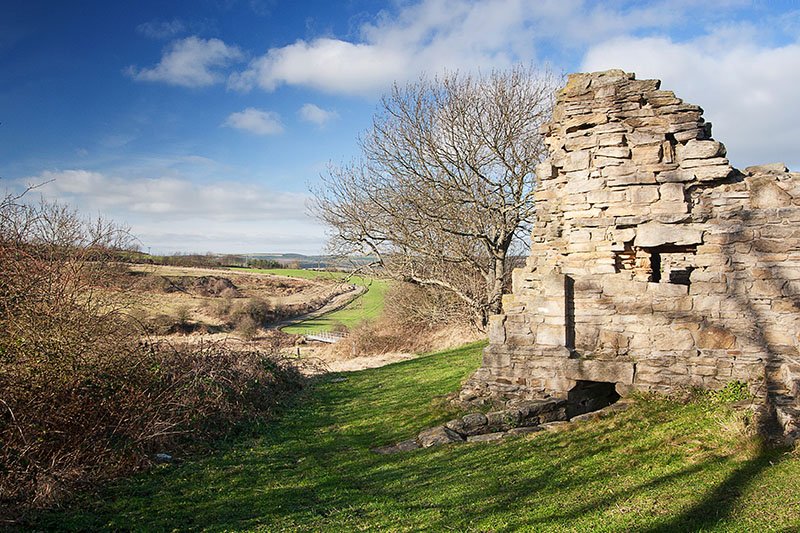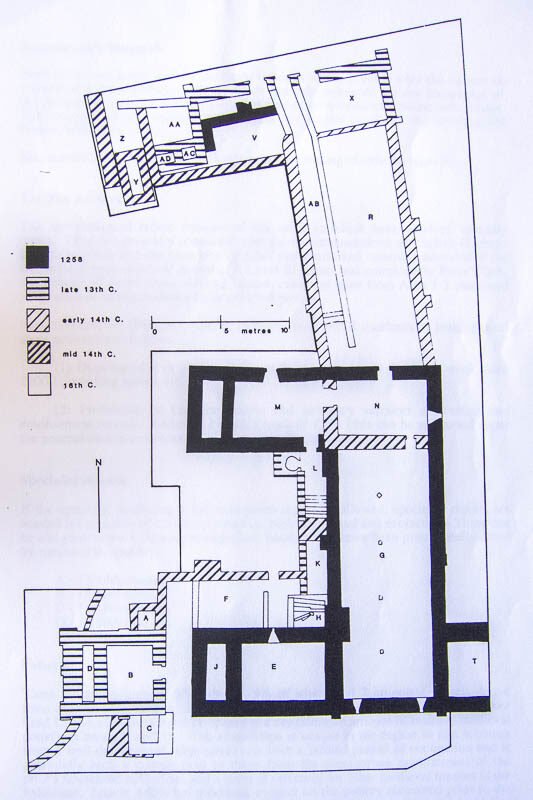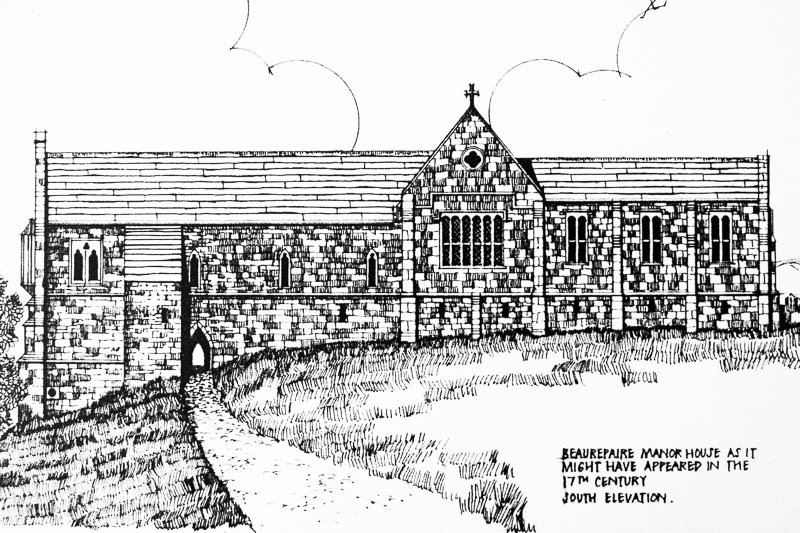Beaurepaire Manor House
Meaning ‘beautiful retreat’ in French (the language of the English court around the time that it was built) this well-consolidated ruin is hidden away on an isolated promontory above the River Browney in what was once a 1,300-acre hunting park belonging to the monastery at Durham. Apart from a period when it was overlooked by the coal mines of Bearpark (a village whose name it may have inspired) the site has maintained the tranquility it was originally chosen for.
Although the manor house is often described as a priory, it was actually commissioned as a lodge by Bertram de Middleton, who was the prior at Durham monastery between 1244-1258. He required it to be of sufficient grandeur to offer hospitality to royalty as it eventually did for Edward I, his son and his grandson, in their successive campaigns against the Scots. Like neighbouring Finchale, which actually WAS a priory, it was also a hostel for retired monks. A century of development and extension followed until, in October 1346, the building was badly damaged by a Scottish army that camped in the park before their defeat the next day at the Battle of Neville’s Cross.
Rebuilt on the orders of Prior John Fossor, soon after that battle, it remained unmolested for almost three hundred years though the monastery itself was dissolved during the religious upheavals of Henry VIII’s turbulent reign. In fact, it continued to expand, eventually covering six acres (of which only a small part – including the chapel – has been excavated) of a 38-acre working site.
The Decline
Sadly, during the English phase of the Civil War (Wars of the Three Kingdoms), it was the Scots once again, in the form of the Covenanter army fighting on the side of Parliament, who brought the building to its knees. Cromwell’s iconoclastic victory ensured that there would be no salvation this time, leaving it to antiquarians and artists such as Samuel Grimm to record its remorseless decline.
Beaurepaire Today
You can visit the tranquil remains of Prior Bertram’s vision today, still silently overlooking the Browney Valley’s pastoral panorama, with no suggestion of the upheavals of the past. The site is hidden away alongside Bearpark Hall Farm (NZ 243439; What3Words: latest.locals.vets) and ultimately has to be approached on foot. We’ve detailed one way of getting there in our Battle of Neville’s Cross Tour. From the stile off the access track (near a small bridge over the River Browney), the final few metres up to the site are on a steep, often muddy, trail with another stile to negotiate. The (mostly) low walls offer some shelter but no cover. You’ll be unlucky to find yourself sharing them with others in the time it takes to visit, so it’s a great place for quiet reflection or a respectful picnic (from which, I’ve not doubt, you’d take away everything you brought with you).





Great blog post Scott and love the old photos to show how it looked. Found your post when I was doing research on the priory for our own blog and dropped a link on to yours. Cheers Simon
Cheers Simon, much appreciated.
All the best
Scott
Fantasticly informative. Thank you.
Thank you. Much appreciated. Scott